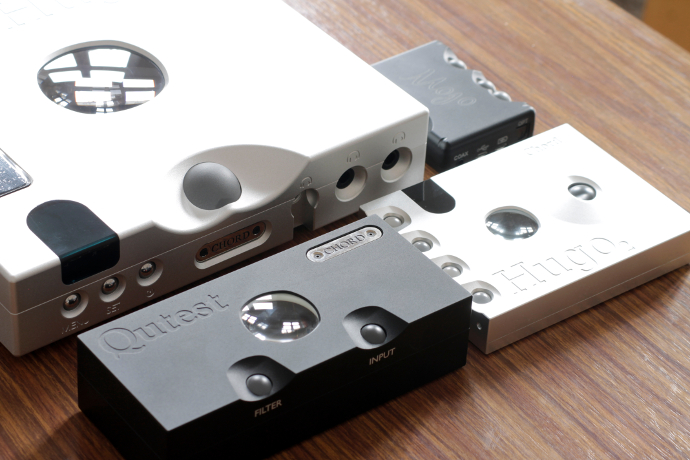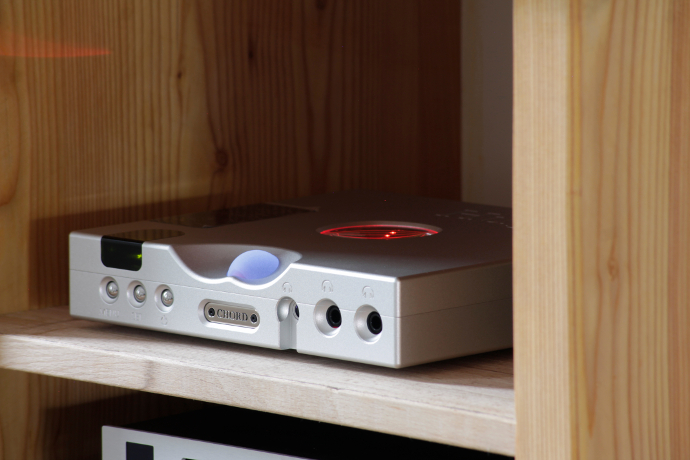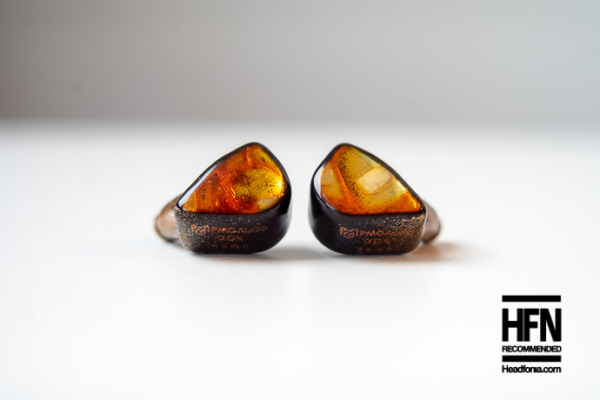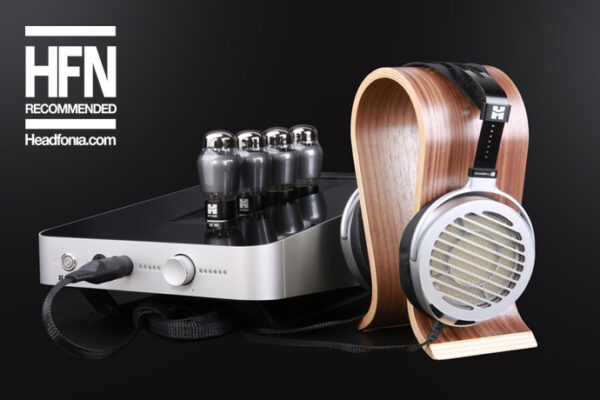The Hugo2 is a wonderful product, that I still enjoy a lot to this day even after three years of owning mine. It’s probably one of the products that I use most of all in my inventory. But as a desktop DAC the Hugo TT2 is definitely the more capable unit.
The Hugo TT2 paints a picture that is bigger and more detailed. It brings out finer nuances with higher resolution and more precise rendering. The Hugo2 overall has a sound that tilts more towards a brighter signature compared to the Hugo TT2. The TT2 has that uncanny warmth for Chord Electronics products which can’t be found in the Hugo2.
Overall the Hugo TT2 wows me more than the Hugo2 when installed in my stereo system. The Hugo2 however has the clear advantage of being a transportable unit. I bring it with me to the office very often, which is something I can’t ever do with the Hugo TT2.
Both of them have the ability to draw me right into the scene when listening, but the Hugo TT2 does that with a more holographic sense than the Hugo2. When using my stereo system this is something that becomes very clear.
The Hugo2 has a treble that is a bit more brittle and harder compared to the Hugo TT2. The TT2 is softer and calmer in that area, but I still would not call the TT2 soft sounding here at all. The Hugo2 just pushes a brighter top-end that I heard many people be uncomfortable with. The extra warmth of the Hugo TT2 might be better suited for those folks.

Chord Electronics – Qutest (1,895$)
In terms of features the Qutest and Hugo TT2 are rather far apart from each other. The Qutest is a plain DAC with RCA line level output only. The TT2 brings a few more features to the table, like headphone outputs, XLR analogue output, a second optical input and of course the ability to use its volume control for power amps. For that you have to pay a big chunk more though.
The Qutest has served as my main DAC at home before I cut a Hugo TT2 shaped hole in my wallet. My kids weren’t happy with the change, as even my three year old could use the Qutest with its color-coded system. Now he has to ask for help again when he wants to listen to his CDs. He’ll get there.
The most notable change after swapping the Qutest for the Hugo TT2 was certainly in the stage size, body and resolution. The Hugo TT2 puts more body into the mids, it sounds more emotional overall and provides significantly more air around the instruments.
With the Hugo TT2 you get a more spherical stage, that let’s you dive into it. The Qutest sounds smaller and tighter in direct comparison. With the Hugo TT2 everything sounds bigger and more majestic if you will. It has better instrumental separation and imaging. The TT2 gives a cleaner cut between instruments and injects more air to surround them.
The Qutest is my absolute benchmark for the sub 2000$ segment, and it will stay just that. But the Hugo TT2 is definitely more than one step ahead to me in all regards. It offers a whole lot more, and that’s hard to deny in my opinion.
Some more comparisons against R2R and Silicon DACs + the conclusion on the last page!








Hugo
Thanks Linus, great review. I’d be keen to hear your thoughts on filter 1 vs filter 4. I have a tt2 into ttoby into ls50 and i found it very fatiguing. I then went from filter 1 to 4 and all the fatigue went away. It’s where i expected it to be now – ie remarkable. I never found much difference with the hugo2 fillers on headphones but maybe they make a bigger difference once a room is involved??
Also why no use of the ragnorak 2 headphone amp?
Linus
Hi Hugo,
thanks a lot for your comment. Much appreciated.
To be honest, I didn’t play much with the filters and left it mostly on Setting 1, but when I get home and have some time to sit down, I will check Filter 4 out for sure. Thanks for the tip! 🙂
I am not a big fan of the headphone amp of the Ragnarok II to be frank. It’s a much better speaker amplifier in my opinion. For headphones I like to use the Flux FA-10. It’s exactly what I need and want.
Hope that helps.
Cheers!
Akshita Sharma
Thank you for sharing the informative and valuable information.
Nico
Hi Linus, why not get yourself an adapter 2x 3pin XLR to 4 pin XLR for balanced connection? I suspect the Susvara would benefit greatly. I connected my Abyss AB1266 Phi to the rear XLR connectors and the sound became faster, more dynamic and tighter, especially bass. Highly recommended!
Jack
Hi, can you make a comparison between Chord Hugo TT2 and Burson Conductor 3X? I already have the 3X, but quite tempted to upgrade to the TT2. Hope this comment reach you soon.
Marco
Yes please, that would be an interesting one!
Nikita Chauhan
Thanks for sharing informative and valuable content.
Keith C Krieger
Next review has got to be pairing it with the m upscaled.
Bob
So let me understand this correctly, if I use the Hugo TT as a DAC I can’t use the preamp, all I have is lineout? And if I use Hugo TT as a preamp I can’t use the DAC as the selectable input?
Am I wrong and misunderstanding or do I need an additional DAC and preamp to cover all permutations when using the Hugo TT?
Brian
Hi Linus,
Have you ever compared the TT2 to something like the Sonnet Morpheus? What has better soundstage?